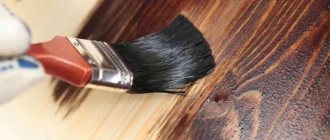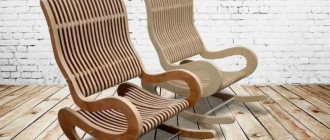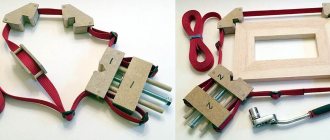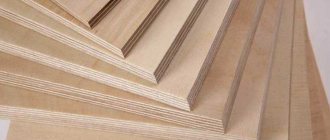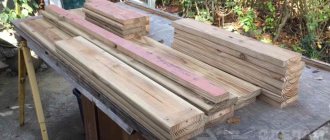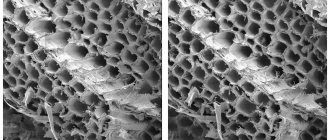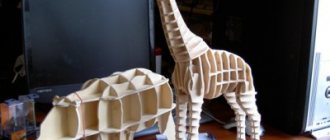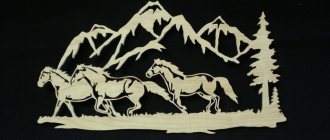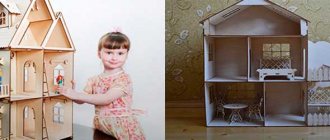Some people spend a lot of time in the garden. At the same time, they want to constantly be surrounded by beauty and comfort. You can improve your local area using plywood figurines for your dacha. This material is pleasant and easy to work with. Plus, it's cheap. Figures made from it can be not only flat, but also voluminous. To do this, you just need to use your imagination and acquire all the necessary tools.
What can be made from plywood
It is not the slightest difficulty to purchase a ready-made figure for your dacha. True, there is a high probability of choosing a standard product, with which all garden stores are filled; It’s hard to call such a purchase creative. A unique author’s work will decorate the garden for many years, but this option may not be at all budget-friendly.
You can make a truly original thing with your own hands. The best part is that this does not require the talents of a professional artist. A little imagination, perseverance and ideas, your own or gleaned from the Internet, and an original decoration will appear in your garden. Such work is valuable because children can be involved in it and together immerse themselves in the exciting world of creativity.
Among the easiest to implement are plywood figures for a summer residence. These include bird feeders, decorative fences, and mailboxes. But the most interesting are fairy-tale characters, funny little animals and people. They decorate the front door, flower bed, veranda. To acquire an original decor, you should start with the choice of material.
From a single piece of plywood Source borskoe.ru
3D crafts
It is believed that three-dimensional plywood crafts are more difficult to make. However, if you use your imagination, you can cope with this without difficulty.
In this case, the elements are made according to the same scheme as two-dimensional ones, they just need more of them to create volume. To save material, the figurine can be given some shape.
It’s especially nice if the craft serves not only as decoration for the yard, but also performs some function.
Family tree: how to surprise guests with a creative print on the wall
How to choose plywood
Plywood is a multilayer building material of increased strength, one of the most convenient and easy-to-work materials. During its manufacture, thin sheets of wood (veneer) are glued together under pressure; For different varieties, different adhesive compositions are used. Common types of plywood include:
- Plywood FC. Material with weak moisture resistance, intended for interior decoration. Veneer sheets are glued together with urea glue.
- FKM plywood. Characterized by increased water resistance, it is used in interior finishing work. Low-toxic melamine and melamine-formaldehyde resins are used in production.
For every taste Source tehnolen.ru
- FSF plywood. A popular variety, it has high water resistance and mechanical strength, and is used in exterior finishing and roofing works. For gluing veneer, resin phenol-formaldehyde glue is used. An important characteristic of the material is the emission class; E1 class plywood can be used in residential premises.
For garden crafts, the best choice in terms of price/quality ratio is FSF plywood; despite the formaldehyde content, it does not pose a health hazard outdoors. Other varieties absorb moisture more strongly, and the figures made from them become deformed. Plywood is made mainly from birch and coniferous wood (pine, spruce, larch); the composition can be combined or homogeneous.
For flower lovers Source yandex.uz
The type of plywood material is chosen depending on what the finished product will be like. If you like the natural texture of wood and want to leave the figurine unpainted and varnish it, choose birch plywood with its denser, harder surface. If you want to decorate your garden with a bright craft, choose a pine leaf - the paint will adhere better to it. To choose a quality material, it is important to pay attention to other characteristics:
- Thickness. Plywood can consist of three, five or more sheets of veneer (always an odd number); thickness ranges from 3 to 30 mm.
- Flexibility. Depends on thickness.
Samples of different thicknesses Source arista45.ru
- Grinding. The following types of sheets are produced: unsanded (NS, rough processing), sanded on one side (Sh1) and on both sides (Sh2). The choice depends on how the figurine is displayed. If it will be fixed to the surface of a wall or fence, it is more logical (and more economical) to stock up on material with one polished surface. If the decor will be visible from all sides, a completely sanded material will be required.
- Grade. Plywood comes in four grades, depending on the number of knots per unit area. When purchasing, each sheet is inspected: knotty cuts and spots can be noticeable on the finished work, as well as cavities filled with resin.
- Quality. When choosing a material, pay attention not only to the defects of the variety - the number of knots and their color. It is also necessary to inspect the side sections. If the slightest peeling of the veneer is observed on the end parts (where the veneer layers are visible), you should refuse such a purchase, despite the tempting price.
Classification by appearance Source tyumen.mastermario.ru
Tool selection
Tools suitable for cutting plywood shapes for the garden are either manual or electric. To work successfully, you need to stock up on a variety of devices:
- Jigsaw. It is better if there is a manual and electric option - in such work they are not always interchangeable.
- Hand drill and drill bits of different sizes.
- A set of files of different thicknesses. It doesn’t hurt to have several files - they periodically become dull and sometimes break.
Examples of folk art Source interistroy.ru
- To prepare the parts and assemble you will need a hammer, a set of screwdrivers, pliers, an awl, a screwdriver and self-tapping screws.
- Files can be used to polish the cuts and shape them, and fine-grained sandpaper can be used for final sanding.
- To draw, you will need a simple pencil, a stencil and carbon paper.
- Paints. For coloring (if it is planned), stock up on acrylic or oil paints that are resistant to ultraviolet radiation, varnish, and brushes.
- Depending on the size and method of installation of the product in the garden, pegs may be needed. Shovel cuttings from a hardware store are suitable for their role.
Who doesn't like cats Source www.diyideas.ru
See also: Catalog of companies that specialize in designing and performing landscape work of any complexity
Figurines for the garden
DIY plywood crafts for the garden are the most practical and inexpensive way to decorate your garden plot. Here you can fully realize your creative potential by making your garden or flower bed more original and interesting.
Select a template
The key feature of plywood is its versatility. From a flat sheet you can cut out almost any figure using a template. A cat climbing over a fence at the dacha, holding a piece of sausage in its teeth; a curious man watching his neighbors through binoculars; a herd of reindeer grazing in a flowerbed. There are a lot of options, and crafts can be flat or voluminous.
It is better for inexperienced craftsmen to start with simple flat figures, which are made in 1.5-2 hours, maximum in a day.
As a sketch, you can use the ideas of other masters, look at the design options for your personal plot on the Internet, or create your own funny drawing. It is better to draw the template on tracing paper or graph paper, and then carefully transfer it to the plane of the plywood sheet. A good option is to create an image in Microsoft Power Point.
You can make a high-quality sketch for a plywood craft using this application according to the following scheme:
- transfer your favorite drawing to the working window of the program;
- go to the scaling section and set the aspect ratio based on the size of the existing sheet of plywood;
- break the finished drawing into fragments;
- print them one by one on the printer.
After this, the individual fragments of the picture are glued into one sheet, the template is carefully cut out along the contour, applied to the plywood and traced with a simple pencil. This operation takes no more than half an hour, but this technique allows you to create effective templates, even without artistic abilities.
Manufacturing technology
After drawing the sketch on a plywood sheet, the figure needs to be cut out.
For thin sheets of plywood, a regular jigsaw is suitable; thicker material can be cut faster with an electric tool.
The cut should not be made strictly along the contour, but leaving a margin of about 1 millimeter. This is a common precaution so that the canvas does not accidentally move to the side and ruin the template. If the decorative decoration involves through cuts, the starting groove is drilled with a drill, after which a jigsaw file is passed through the resulting hole.
After completion of the work, the remaining irregularities are removed with a fine file or sandpaper.
Finishing
Of course, even the most original figurine requires at least painting to become brighter and more interesting.
Before applying the design, the entire surface that is supposed to be painted must be treated with fine-grained sandpaper, making the plywood a little rough. This will ensure better adhesion of wood to paints and varnishes. Then you need to remove the wood dust remaining after treatment and degrease the surface with a solvent.
If the template is multi-colored, it is recommended to mark the demarcation lines with masking tape. It is better to paint fragments of such crafts separately to avoid accidental mixing of colors.
The paint is applied in multiple layers, with each subsequent layer applied only after the previous one has completely dried. This painting scheme will make the design more durable: the paint will not fade in the sun or peel off after rain.
At the final stage, the finished surface can be varnished to make the figurine more resistant to environmental influences. The varnish is applied according to a similar scheme: a multi-layer texture with the obligatory drying of each layer.
Note! If the figurines are removed from the garden in winter, the paint will have to be renewed approximately once every 3-4 years.
To increase the moisture resistance of the design, it is recommended to choose acrylic paints for outdoor use. Materials for facade work are more resistant to ultraviolet radiation and moisture and reliably protect wood.
Working methods
Externally, the process of making plywood figurines is simple: just cut out the design you like on a stencil, and then paint it with paints. But, as in any work, there are subtleties, knowledge of which will help you avoid annoying mistakes. In order for the result to be satisfactory, you need to remember the following nuances:
- If the cutting contour is quite complex (many curved sections), it is better to purchase grade 1 or 2 plywood. This will eliminate accidents that complicate the work: increased flexibility of the sheet or its cracking.
Sawing with a jigsaw Source makemone.ru
- Optimal sheet thickness. As a rule, plywood with a thickness of 18-20 mm is chosen. If the figurine is set, you can use material of different thicknesses; the product will gain volume and look more impressive.
- Excessive humidity. Before starting work, it is better to dry the plywood. It will become more pliable, it will be easier to work, and you will have to change the removable files on the jigsaw less often.
A few more cats Source yandex.com
- Workplace equipment. The most comfortable working conditions will be provided by a specialized carpentry workbench, but you can do without it. At home, a practical replacement for it would be a piece of timber attached to a table. It will successfully serve as the basis for fixing the jigsaw and as a platform for other tools.
On a burning topic Source dacha.help
Tools are used for different processes:
- Jigsaw. With its help, the largest parts are cut out.
- Hand jigsaw. Used for manual sawing of smaller and more complex shaped parts. It will be more convenient for an inexperienced craftsman to work with a jigsaw, the file of which has large teeth and a thick tape. For cutting out small complex fragments, a tool with small teeth and a thin strip is more suitable, but it is more difficult to control, and in the hands of an inexperienced person it can break.
Jigsaw files Source stroyert.ru
- Drill or awl. Needed for making holes and drilling parts that a jigsaw cannot handle. A thin drill will help smooth out the curly elements.
- Band-saw. It is not often used for artistic work; mainly if the sheets are thick and the blanks for the garden figurine are large enough.
Stencil work Source master-klass.livejournal.com
In order for a garden figurine to please household members and guests for as long as possible, it must be protected from atmospheric moisture. For this purpose, staining, staining, oil and wax treatment, and varnishing are used. A plywood figurine will be successfully protected by one or two layers of paint and varnish materials.
Before applying a decorative layer of paint, the plywood is prepared. To do this, the material is sanded and primed, for example, with acrylic varnish. On a leveled surface, the coating will look smooth and beautiful.
All that remains is to color it Source arista45.ru
See also: Catalog of companies that specialize in the design and construction of small architectural forms
Preparing the drawing
A stencil for transferring a pattern can be prepared in two ways:
- Draw it yourself. You simply draw the design you like on a piece of paper, and then cut it out according to the silhouette and transfer it using carbon paper to a sheet of plywood. People with a steady hand and a keen eye draw a figure with a pencil directly on the plywood.
Kingfisher and Woodpecker Source samodelino.ru
- Find it on the Internet. Download the picture, print it in the required scale, and transfer it to the prepared surface. For ease of work, areas that need to be cut are hatched.
Complex figures Source optolov.ru
See also: Catalog of companies that specialize in the installation of metal structures (canopies, greenhouses, etc.)
We collect the required inventory
Among the creative tools you will need are:
- Hand jigsaw. In essence, this is a frame that resembles the letter “P”, but only rounded. It can be made from either iron or wood. At the edges of this arc there are clips onto which a small file is attached.
It is worth knowing that jigsaw files are sharpened on one side and are small steel strips. Their disadvantage is that they often break, which is why you should purchase spare ones.
- A key used to secure the saw blades to the tool.
- A sheet of three-layer plywood, which should be as thin as possible. It will be the best option for crafts using a hand plywood jigsaw. If you haven’t found the thinnest one, it doesn’t matter, take a thick one 4-9 mm.
- A stand that will be used for cutting. You can do it yourself, for which you need a 10 mm board. thickness. It is secured to the table with screws, and the cutout extends beyond the edge of the table.5. Sandpaper with coarse and fine grains.
- Awls, needle files and files.
- Pliers for removing a stuck nail file.
- Hacksaw to cut sheet.
- Copy paper.
- Sharpened pencils are useful for marking.
- PVA glue.
- And finally, drawings of plywood crafts for the correct use of a jigsaw.
Execution technology
Most of the work is done with a jigsaw; For efficient and high-quality work, you must adhere to the rules for using the tool:
- Work on a hard substrate. Plywood sheet, like a multi-layer wooden material, has noticeable flexibility, which manifests itself under any slightest significant pressure. In order for the cutting line to be of high quality and strictly follow the mark, you cannot do without a solid, stable base.
Bright accents Source monitorfm.ru
- Jigsaw technology. During the entire process, the saw is positioned perpendicular to the end of the plywood; the tool is moved evenly, without effort. If these two conditions are not met, the file often breaks.
- For a jigsaw file, entrance holes with a thickness of 2-4 mm are initially drilled.
Based on fairy tales Source www.asienda.ru
- Making a “blind” hole. To allow the file to enter the “blind” areas, auxiliary holes are made (in the area that will be cut). This area is cut out, starting from the internal area to the peripheral.
- To cut a sharp turn, the file continues to be held in the working position (vertically), while simultaneously turning the workpiece until the desired direction is obtained, after which cutting continues along the intended line.
Different approaches to design Source yellowhome.ru
Further procedure for making a figurine from plywood for the dacha:
- After the figure is cut out, its edges are sanded with sandpaper.
- If a figure cut out of plywood is to be installed on the ground, pegs are screwed into the lower part with self-tapping screws. In order for the craft to gain true stability and not fall over under a gust of wind, the length of the pegs is set to 40-50 cm.
Rural motifs Source ruscos.ru
- The finished model is painted with paints (the contours are first drawn in pencil). After the paint has dried, carefully paint the ends, and then cover the product with a layer of varnish.
- The figurine is fixed on the ground by digging stakes, or secured with self-tapping screws on a fence (wall).
Painting stage Source answers-stairs.ru
Why plywood
The choice in favor of plywood was not made by chance. Unlike simple wood, this material has the following advantages:
- strength. The structure of the sheet is multilayer, which ensures a certain rigidity and resistance to deformation;
- availability. Available in any hardware store and sold in an affordable price segment;
- ease of processing. Cutting crafts does not always require a power tool; you can get by with an ordinary jigsaw;
- safety. The material is environmentally friendly, so you can even make toys from it without fear that your child will develop an allergy.
Plywood initially has a smooth surface, so it does not require additional sanding.
Products are divided into grades, which differ not only in cost, but also in quality. For crafts, they usually use sheets of the 1st and 2nd grades, which do not have veneer delamination, chips and other defects. If the decorative decoration is intended to be used in the garden, it makes sense to give preference to moisture-resistant plywood.
Template options and their use
From simple plywood you can make interesting and useful crafts for your garden:
- Bird feeders. A useful accessory, especially if there are children in the house. The finished drawing can be easily found on the Internet. It has a roof, tray, supports and side walls that prevent feed from spilling onto the ground.
Feeder based on the template Source vbelgorode.com
- An original flower garden in the form of an artist's palette. A true amateur gardener will not refuse to receive such a flowerbed.
- Models of large animals (cows, deer). These decorations can also provide practical benefits, such as holding flower pots.
- Small cartoon images of bunnies, dogs, and kittens look especially funny near a flower bed or next to a bush.
Artist's palette Source samdizajner.ru
- Images of birds. They can be of any size: a stork or rooster will perch under a tree, and a woodpecker will perch on a fence or trunk.
- Volumetric crafts. They consist of several parts held together with self-tapping screws and look especially attractive.
For a good mood Source rinnipool.ru
